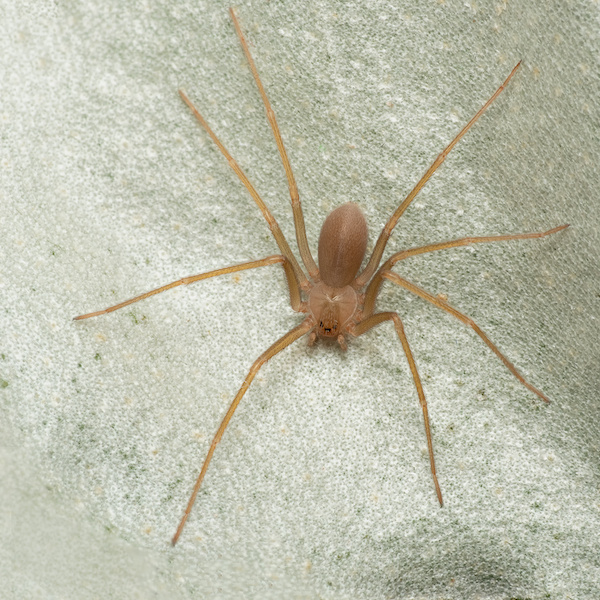Spiders, especially the venomous brown recluse, often stir discomfort and worry among homeowners. No one wants to share their home with a host of creepy crawling spiders! When you have an infestation on your hands, finding a practical solution often becomes your top priority.
Fortunately, brown recluse spider traps offer a practical, non-invasive means to manage these creatures within your home. These traps come in various forms, giving you the flexibility to place them wherever you please. These traps can capture brown recluse spiders and prevent them from further spreading indoors by enticing them with specific baits or pheromones.
Keep reading to find out how to make brown recluse spider traps at home!
Types of Traps You Can Use
Several trap options effectively manage brown recluse spider infestations, offering diverse choices that cater to various preferences and needs.
Placed along baseboards or discreet corners, adhesive traps are discreet and efficient tools, capturing spiders with sticky surfaces as they move through the area, reminiscent of a spider’s nocturnal refuge.
Glue traps, often essential in pest management, boast a ready-to-use design, making them an appealing choice for homeowners seeking immediate results. When situated in areas with significant spider activity, these traps can quietly and effectively capture the brown recluse spiders.
Pheromone-based brown recluse spider traps use specific pheromones that attract spiders to their demise. When strategically placed in areas frequented by these arachnids, they serve as effective bait stations for capturing your arachnid invaders.
Different trap types suit specific homeowner preferences and property needs. Whether prioritizing discretion or swift capture, these traps provide various solutions for managing brown recluse spiders in a residential environment.
Using Brown Recluse Spider Traps Effectively
To maximize the efficiency of your traps, place them in areas where the spiders are likely to roam. Strategic placement and a deep understanding of their behavior are key to catching these pests quickly.
But what are the habits of these seemingly reclusive pests? These spiders prefer quiet, tucked-away areas such as attics, basements, and storage spaces. Oftentimes, you’ll find them hidden in old boxes or closets away from human activity.
Because brown recluse spiders are shy creatures, they may not readily explore new objects in their environment. To enhance the trap’s effectiveness, consider placing it along common pathways or near areas where you’ve spotted these spiders. Additionally, using multiple traps in different locations can increase the likelihood of capturing these elusive spiders.

Place the brown recluse spider traps along baseboards, in corners, near cluttered areas, or behind furniture where these spiders might seek refuge. Take care where you place the traps, and keep them out of reach from curious children and pets.
After finding the ideal spot for your trap, unbox the product and look at the manufacturer’s instructions if using a store-bought trap. Some traps require activating or baiting before use, while others are as simple as putting them on the ground.
To maintain the trap’s effectiveness, remember to check and replace the traps regularly. Over time, traps can accumulate captured spiders, dust, and debris, reducing efficiency. Replace them as needed to ensure continuous control.
Additional Tips for Maintaining a Spider-Free Environment
While brown recluse spider traps can be helpful, additional preventive measures can further enhance their efficiency in keeping your home spider-free. Here are some tips to complement the use of traps:
- Reduce Clutter: Brown recluse spiders thrive in cluttered environments. Regularly decluttering and organizing storage areas, basements, and attics can make these spaces less appealing to spiders, reducing potential hiding spots.
- Seal Entry Points: Inspect and seal any cracks, gaps, or crevices around windows, doors, and foundation areas. Brown recluse spiders can enter homes through small openings, so blocking these entry points helps prevent their access.
- Regular Cleaning: Vacuuming and dusting your home can eliminate spider webs, eggs, and other debris, reducing the spider population. Pay attention to hidden areas and corners where spiders build their webs.
- Outdoor Maintenance: Keep the area around your home tidy. Trim back vegetation, bushes, and overgrown greenery close to the house to deter spiders from nesting near entry points.
- Professional Inspection: Consider hiring a pest control professional to inspect your property thoroughly. Professionals can identify potential problem areas and provide tailored recommendations for effective spider control.
Combining these proactive measures with the strategic use of brown recluse spider traps can significantly reduce the likelihood of spider infestations and create a more spider-resistant environment in your home.
Trust proof. For Your Spider Woes
Turning to professionals for assistance when dealing with severe infestations or ongoing spider issues is crucial. Our expert team specializes in managing hazardous pests like the brown recluse spider, and we’re equipped with cutting-edge techniques and treatments to end an infestation.
What sets us apart is our commitment to eradicating existing problems and implementing strategies that deter these dangerous pests from returning. We take pride in our comprehensive approach, ensuring the safety of your family and the protection of your property from the risks associated with brown recluse spiders. Contact us today for a customized solution that guarantees a safe and spider-free environment for your home!

